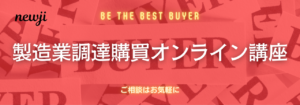- お役立ち記事
- Differences between offset printing and gravure printing and the optimal choice for each application

Differences between offset printing and gravure printing and the optimal choice for each application

目次
Understanding Offset Printing
Offset printing is a widely-used printing technique where the inked image is transferred, or “offset,” from a plate to a rubber blanket, before finally being printed onto the printing surface.
This method is commonly used for producing high-volume publications like newspapers, magazines, brochures, and books.
Its strong suit lies in producing consistent, high-quality prints at a relatively low cost per unit once the initial setup is complete.
How Does Offset Printing Work?
Offset printing involves three main steps.
First, the desired image is laser-etched onto metal plates, separating different colors that will be included in the print.
These plates are then loaded onto a printing press.
Ink is applied and transferred from the plate to a rubber blanket and finally onto paper or another material.
A key characteristic of offset printing is its ability to handle large volumes while maintaining excellent image quality through precise color management.
Advantages of Offset Printing
Offset printing offers several benefits, including:
– Superior Image Quality: Due to its precision, offset printing can create sharp and clean images with consistent color distribution.
– Cost-Effectiveness: Ideal for large runs, the cost per page decreases as the volume increases.
– Versatility: It can print on various surfaces, including paper, cardboard, and even plastic.
– Speed: Once the plates are set up, the actual printing process is fast, making it suitable for large-scale production.
Exploring Gravure Printing
Gravure printing, often referred to as rotogravure, is another impactful printing method known for its ability to produce high-quality images.
It involves engraving the image onto a cylinder, which is then filled with ink, and the excess is wiped away.
The material to be printed is pressed against the cylinder to produce the image.
It’s particularly popular for long-run, high-volume printing jobs, such as magazines, packaging, and wallpaper.
How Does Gravure Printing Work?
Gravure printing uses a rotary printing press where the image to be printed is engraved onto a cylinder.
Ink is applied to the cylinder and fills the recessed areas.
When the material to be printed passes over the cylinder, the ink is transferred.
Because of this engraving method, gravure is capable of handling detailed and intricate color transitions with consistent results over large print runs.
Advantages of Gravure Printing
This method shines in specific areas:
– High Image Quality: Gravure delivers superior image quality with rich, vibrant color depth.
– Consistency: It offers excellent consistency over large print runs, making it ideal for mass production.
– Durability: The engraved cylinder is robust and can be used for several million impressions before it wears out.
– Versatility with Materials: It’s particularly efficient for printing on substrates other than paper, such as plastics and foils.
Offset Printing vs. Gravure Printing: Key Differences
While both methods serve the high-volume printing market, their differences define their optimal applications.
The fundamental difference lies in the technology and set-up costs.
Offset printing involves preparing plates with each job, which can take time and incur costs, but pays off with large volumes where setup costs are mitigated over long runs.
In contrast, gravure involves the engraving of cylinders, a potentially higher initial cost but a boon for extended production with unsurpassed quality and consistency.
Image quality is another distinguishing factor – while both offer high-quality prints, the gravure method provides deeper colors and details than offset, making it a preferred choice for art books and luxury packaging.
However, offset printing wins in versatility with substrates and small to medium print runs, favoring quick setup and turnaround.
Optimal Choice for Each Application
Choosing between offset and gravure printing depends on the specific needs of a print job.
When to Choose Offset Printing
Offset printing is the go-to option for:
– Small to Medium Print Runs: Quick setup and lower initial costs make it ideal for these volumes.
– Variety of Substrates: If you need to print across various materials, such as coated or uncoated papers, offset is the way to go.
– Flexibility: Frequent changing or updating of designs suits offset, as new plates need to be created with each change, which remains affordable over short runs.
When to Choose Gravure Printing
Gravure printing shines with:
– Long Print Runs: The initial high cost is counterbalanced by the low cost per print on extended runs.
– Consistency and Quality: For projects requiring strict color fidelity and precision, gravure is unparalleled.
– Specialty Substrates: If printing on materials like packaging film or metalized paper, gravure provides the needed durability and detail.
Conclusion
Both offset and gravure printing serve distinct purposes, complemented by unique technologies and advantages.
While offset printing brings cost-efficiency and versatility to a variety of substrates with balanced quality, gravure excels in high-fidelity, precise, and high-volume applications with lasting durability.
Understanding these differences helps tailor your choice to specific project needs, ensuring optimal quality and efficiency for any printing demand.
 資料ダウンロード
資料ダウンロード
QCD管理受発注クラウド「newji」は、受発注部門で必要なQCD管理全てを備えた、現場特化型兼クラウド型の今世紀最高の受発注管理システムとなります。
 NEWJI DX
NEWJI DX
製造業に特化したデジタルトランスフォーメーション(DX)の実現を目指す請負開発型のコンサルティングサービスです。AI、iPaaS、および先端の技術を駆使して、製造プロセスの効率化、業務効率化、チームワーク強化、コスト削減、品質向上を実現します。このサービスは、製造業の課題を深く理解し、それに対する最適なデジタルソリューションを提供することで、企業が持続的な成長とイノベーションを達成できるようサポートします。
 製造業ニュース解説
製造業ニュース解説
製造業、主に購買・調達部門にお勤めの方々に向けた情報を配信しております。
新任の方やベテランの方、管理職を対象とした幅広いコンテンツをご用意しております。
 お問い合わせ
お問い合わせ
コストダウンが利益に直結する術だと理解していても、なかなか前に進めることができない状況。そんな時は、newjiのコストダウン自動化機能で大きく利益貢献しよう!
(β版非公開)






